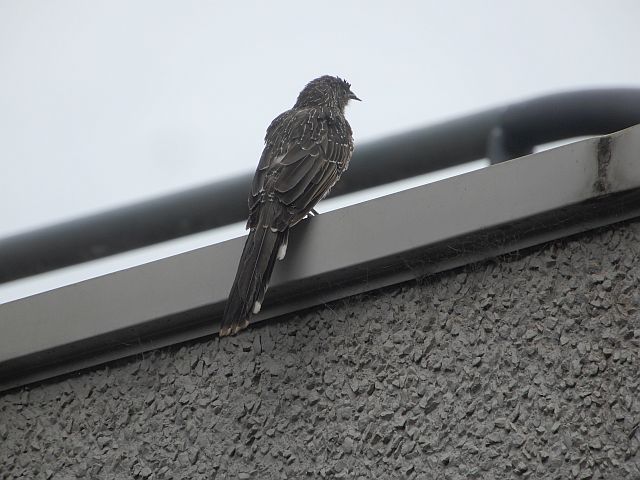
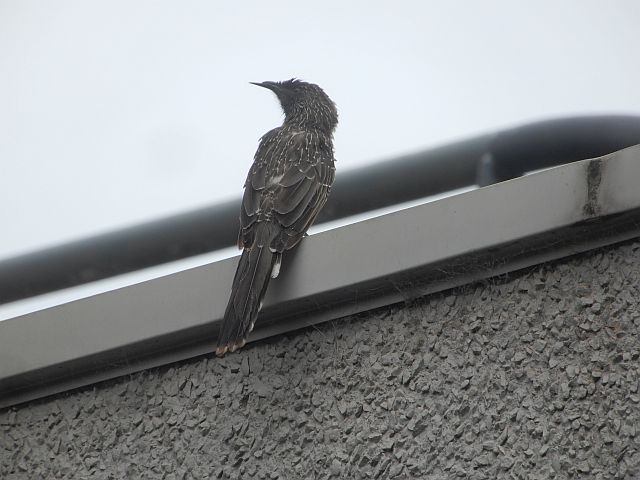 Here is a scruffy looking Wattlebird found on the walk from Wollongong Station to Wollongong library. At Wollongong Library I am doing part time work selecting books for those too old to visit the library.
Here is a scruffy looking Wattlebird found on the walk from Wollongong Station to Wollongong library. At Wollongong Library I am doing part time work selecting books for those too old to visit the library.
 Here is a scruffy looking Wattlebird found on the walk from Wollongong Station to Wollongong library. At Wollongong Library I am doing part time work selecting books for those too old to visit the library.
Here is a scruffy looking Wattlebird found on the walk from Wollongong Station to Wollongong library. At Wollongong Library I am doing part time work selecting books for those too old to visit the library.
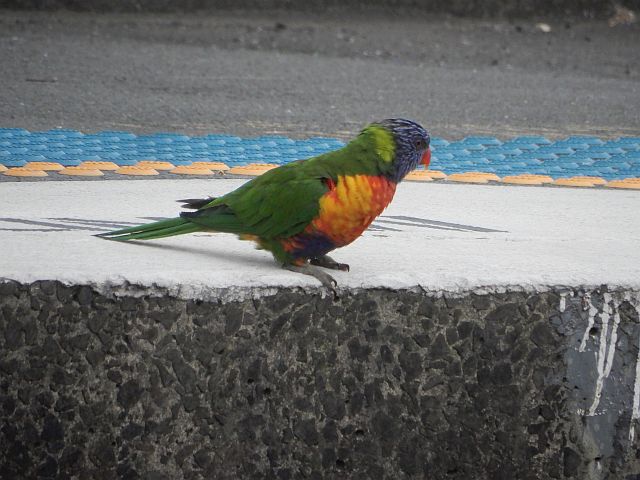
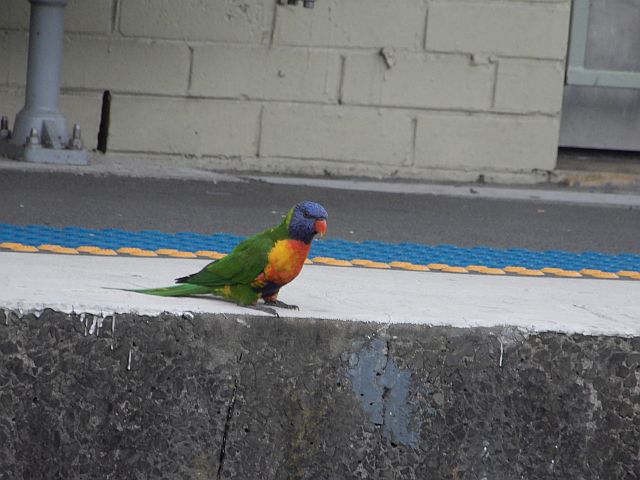 At Wollongong North train station I found two Rainbow Lorikeets hopping about. Rainbow Lorikeets are a common breed in the Illawarra but still something to observe while waiting for your train. It is always good to see some local color and there is plenty of color in a Rainbow Lorikeet.
At Wollongong North train station I found two Rainbow Lorikeets hopping about. Rainbow Lorikeets are a common breed in the Illawarra but still something to observe while waiting for your train. It is always good to see some local color and there is plenty of color in a Rainbow Lorikeet.
 Sculptures in the Garden at Wollongong Botanic Garden from the sixth of February to the fourteenth of March. Covid-19 got in the way last year but not this year. I still find the wildlife more attractive but it is a big event for the area and I am not knocking it. Not every sculpture is included here, just the ones I came across. Make of them what you will. Check them out in person if you like.
Sculptures in the Garden at Wollongong Botanic Garden from the sixth of February to the fourteenth of March. Covid-19 got in the way last year but not this year. I still find the wildlife more attractive but it is a big event for the area and I am not knocking it. Not every sculpture is included here, just the ones I came across. Make of them what you will. Check them out in person if you like.

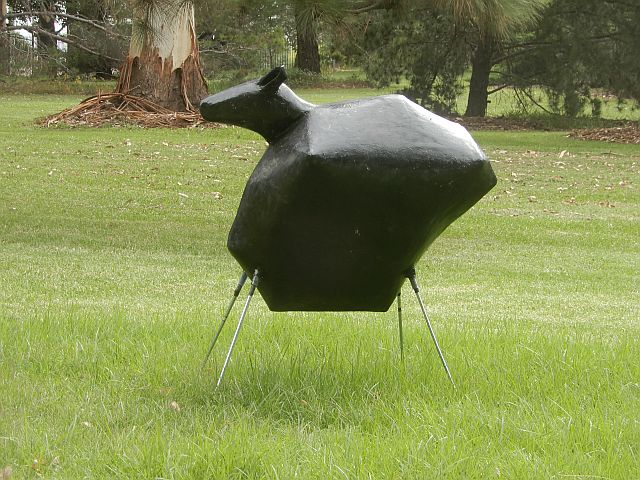 Sculptures offered up to the public at Wollongong Botanic Garden tend to be strange and come with a story. These are Delene White’s metal looking sheep (fiberglass, flowcoat, cement, steel rod and her dad’s golf clubs). She calls these sheep Flockers. Apparently you need, according to White, seven sheep to form a flock, even an artificial one. The black sheep represents individuality.
Sculptures offered up to the public at Wollongong Botanic Garden tend to be strange and come with a story. These are Delene White’s metal looking sheep (fiberglass, flowcoat, cement, steel rod and her dad’s golf clubs). She calls these sheep Flockers. Apparently you need, according to White, seven sheep to form a flock, even an artificial one. The black sheep represents individuality.
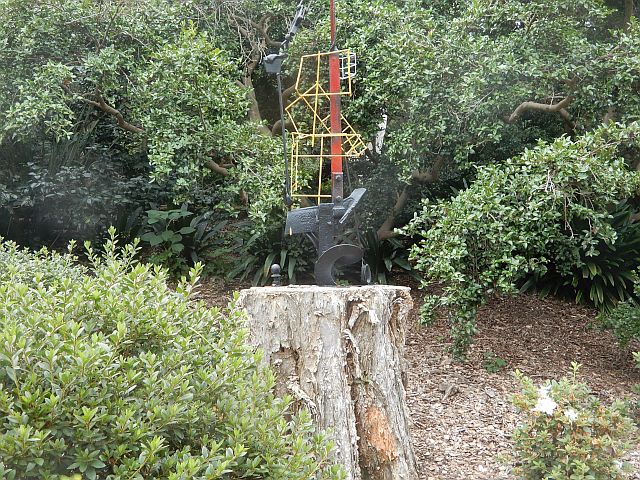 This sculpture, Dry Dock, by Victoria Monk, is made of reclaimed mild steel. According to Monk Dry Dock is an ode to the working harbor with its fishermen and steelworkers. This is not my favorite but worth mentioning.
This sculpture, Dry Dock, by Victoria Monk, is made of reclaimed mild steel. According to Monk Dry Dock is an ode to the working harbor with its fishermen and steelworkers. This is not my favorite but worth mentioning.
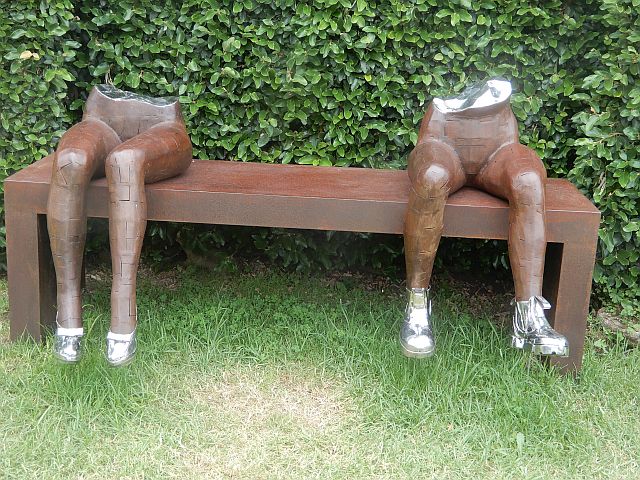 This is Bums on Seats by Nicole Allen. Apparently, according to the write up in the booklet that comes with Sculptures in the Garden, she is intrigued with the human form. There is stainless steel in this work.
This is Bums on Seats by Nicole Allen. Apparently, according to the write up in the booklet that comes with Sculptures in the Garden, she is intrigued with the human form. There is stainless steel in this work.
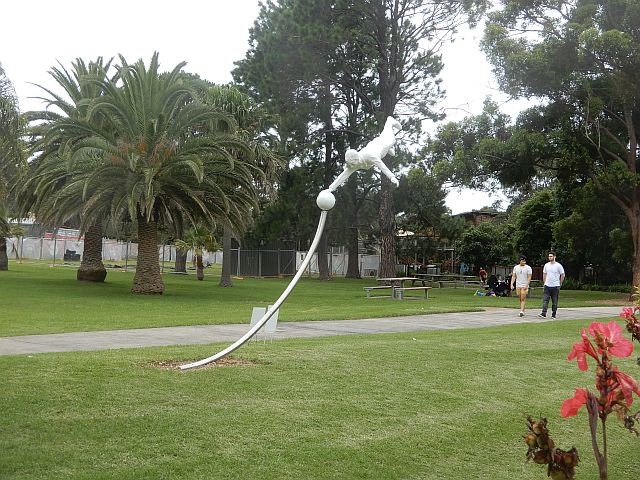
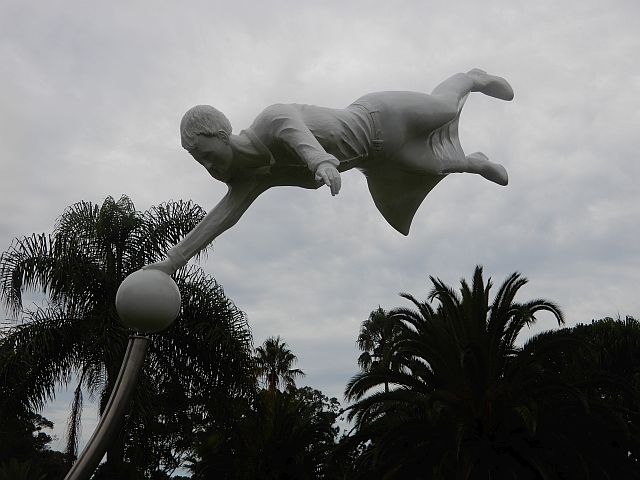 My World Revolves around Me by Bryn Jones has some entertainment value as you can see. It is made with stainless steel, polyurethane, foam fiberglass and paint. For some reason it reminds me of the globe of the world playfully used by Charlie Chaplin in film The Great Dictator.
My World Revolves around Me by Bryn Jones has some entertainment value as you can see. It is made with stainless steel, polyurethane, foam fiberglass and paint. For some reason it reminds me of the globe of the world playfully used by Charlie Chaplin in film The Great Dictator.
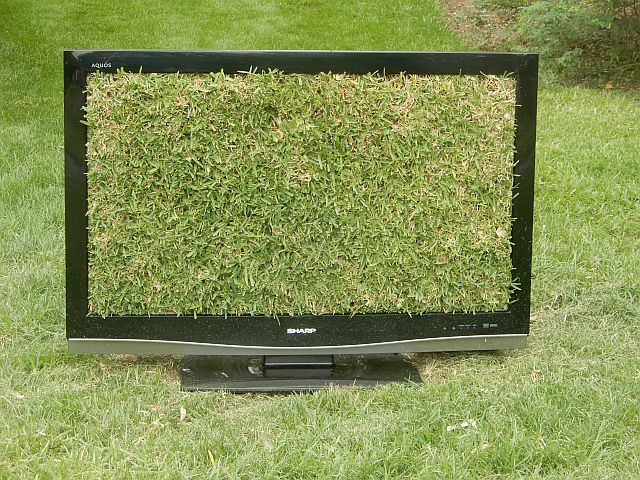 Sam Crosby’s Channel G is a bit of a surprise at first. I suppose it reminds us to get out more and not be forever stuck in front of the tele. It is made with fired earthenware, recycled materials including Sharp TV and TV shelf, soil and turf so there is more to the construction than one might think at first glance. Sam is probably short for Samantha.
Sam Crosby’s Channel G is a bit of a surprise at first. I suppose it reminds us to get out more and not be forever stuck in front of the tele. It is made with fired earthenware, recycled materials including Sharp TV and TV shelf, soil and turf so there is more to the construction than one might think at first glance. Sam is probably short for Samantha.

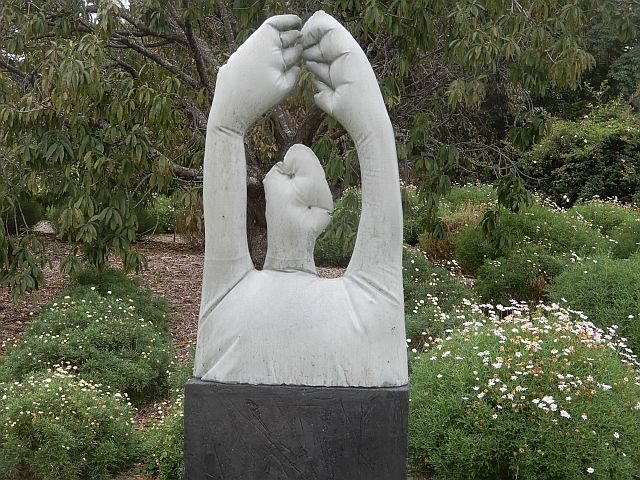 My Greatest Lament by Mark Cuthbertson was made with steel reinforced concrete, soft form concrete and internal steel detail. According to Cuthbertson, this work explores the notion of regret and loss. This is no doubt not a work I fully appreciate or even understand.
My Greatest Lament by Mark Cuthbertson was made with steel reinforced concrete, soft form concrete and internal steel detail. According to Cuthbertson, this work explores the notion of regret and loss. This is no doubt not a work I fully appreciate or even understand.
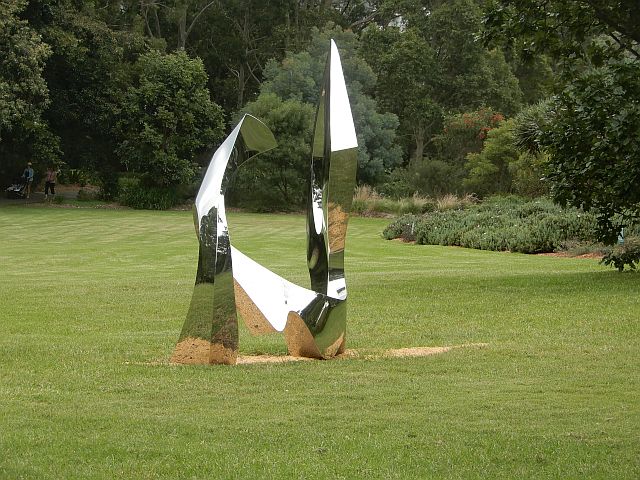 This is John Fitzmaurice’s Splash. It is made of stainless steel polished to a mirror finish. It is, according to Fitzmaurice, his homage to whales. We used to hunt them. Now we admire them. Admiring them, of course, is better for the whales. It was chiefly inspired by his love of the ocean. He is a surfer. It is a work you can look at from a number of angles and see something different each time.
This is John Fitzmaurice’s Splash. It is made of stainless steel polished to a mirror finish. It is, according to Fitzmaurice, his homage to whales. We used to hunt them. Now we admire them. Admiring them, of course, is better for the whales. It was chiefly inspired by his love of the ocean. He is a surfer. It is a work you can look at from a number of angles and see something different each time.
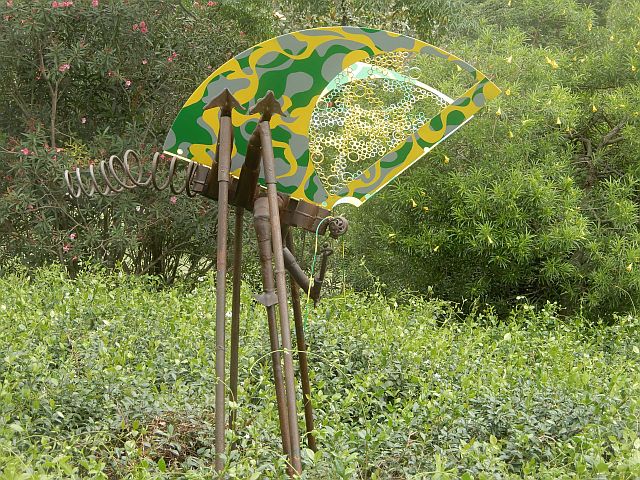
 It is far from surprising there is steel in Deborah Redwood’s Drone. She questions whether the insects we see around us are all natural. I remember an episode of Get Smart in which Control scientists had created this fly spy. Since then miniature spying devices have improved somewhat and nowadays it might just be possibly to make a mechanical fly that acts like a fly and can film and record. If not I imagine spy agencies in the real world are getting closer to that mark.
It is far from surprising there is steel in Deborah Redwood’s Drone. She questions whether the insects we see around us are all natural. I remember an episode of Get Smart in which Control scientists had created this fly spy. Since then miniature spying devices have improved somewhat and nowadays it might just be possibly to make a mechanical fly that acts like a fly and can film and record. If not I imagine spy agencies in the real world are getting closer to that mark.
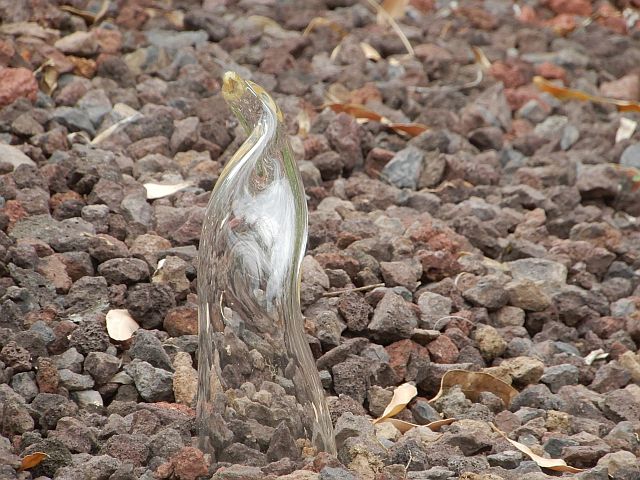
 I particularly like Laura Nolan’s Evolve which is various sizes of blown glass and steel on display in the drier part of the Botanic Garden. I suppose you make of them what you will but I imagine swamp birds with their long necks and other, forest based birds, preening. Evolution is and hopefully always will be our understanding of how the birds we have in our world have come about.
I particularly like Laura Nolan’s Evolve which is various sizes of blown glass and steel on display in the drier part of the Botanic Garden. I suppose you make of them what you will but I imagine swamp birds with their long necks and other, forest based birds, preening. Evolution is and hopefully always will be our understanding of how the birds we have in our world have come about.
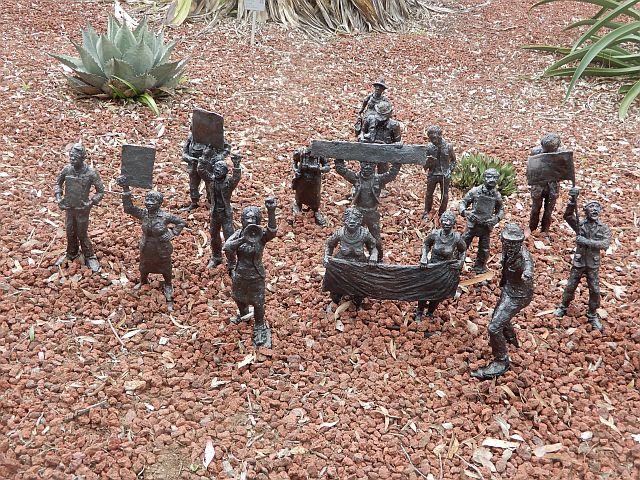
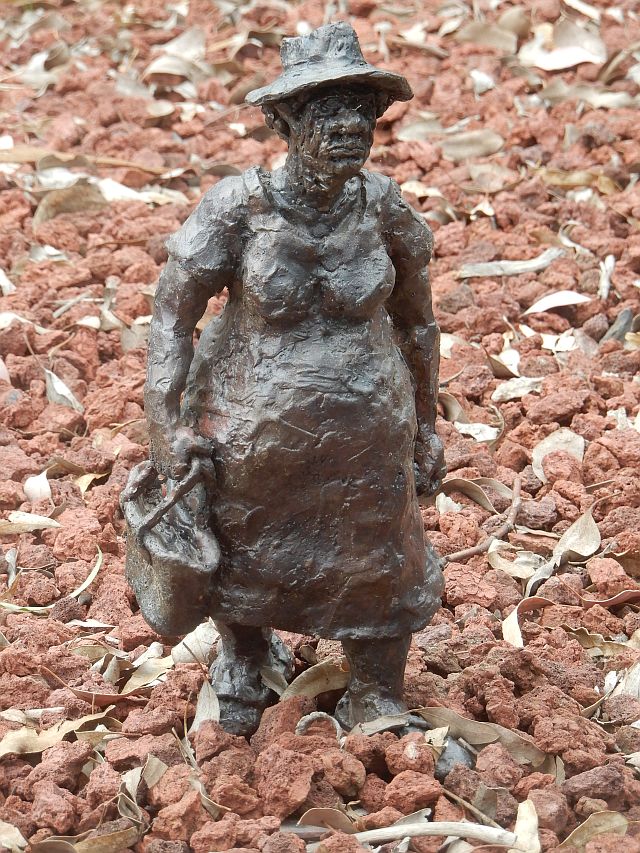 Here we have Ian Mitchell Scott’s Small Demonstration. The figures look like clay but are actually made out of bronze and they definitely are small. This is Scott’s analysis of the nature of all demonstrations. In the second figure shown it is, I suspect, a past middle age woman who has done her shopping and just wants to get past this mob of banner wavers in front of her. This would mean she is not part of the demonstration at all and has simply been inconvenienced by it.
Here we have Ian Mitchell Scott’s Small Demonstration. The figures look like clay but are actually made out of bronze and they definitely are small. This is Scott’s analysis of the nature of all demonstrations. In the second figure shown it is, I suspect, a past middle age woman who has done her shopping and just wants to get past this mob of banner wavers in front of her. This would mean she is not part of the demonstration at all and has simply been inconvenienced by it.
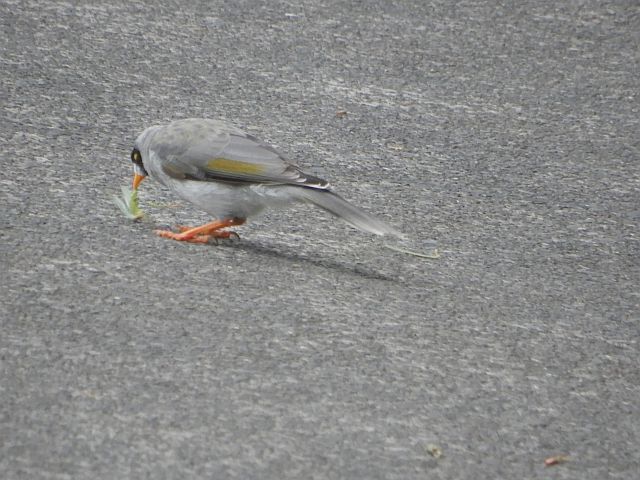 At the entrance to the Botanic Garden that day, on the footpath, I found a Noisy Minor making a meal out of an insect. I waited for the bird to finish before proceeding on into the Garden. Noisy Minors are very common on the south coast of New South Wales, Australia.
At the entrance to the Botanic Garden that day, on the footpath, I found a Noisy Minor making a meal out of an insect. I waited for the bird to finish before proceeding on into the Garden. Noisy Minors are very common on the south coast of New South Wales, Australia.

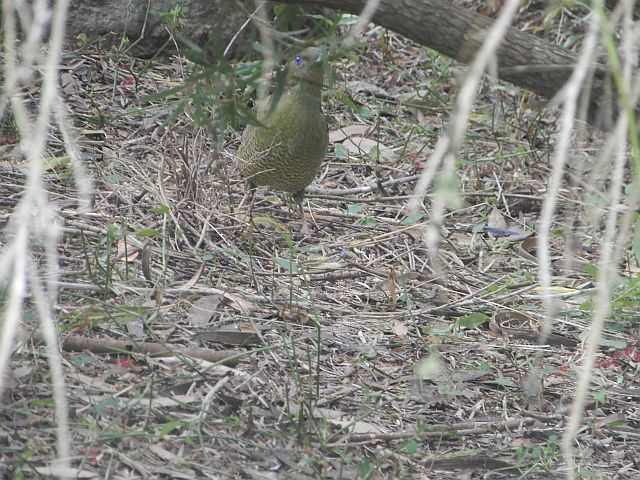 Any trip to Wollongong Botanic Garden, at least for me, would not be so good if not for wildlife sightings. On the day I went to Sculptures in the Garden there was indeed plenty of wildlife about. Bees were having a great time on the flowering plants. I came across two female bowerbirds that appeared to be nest building. There were deep throated sounds issuing forth from where they were in some scrub.
Any trip to Wollongong Botanic Garden, at least for me, would not be so good if not for wildlife sightings. On the day I went to Sculptures in the Garden there was indeed plenty of wildlife about. Bees were having a great time on the flowering plants. I came across two female bowerbirds that appeared to be nest building. There were deep throated sounds issuing forth from where they were in some scrub.
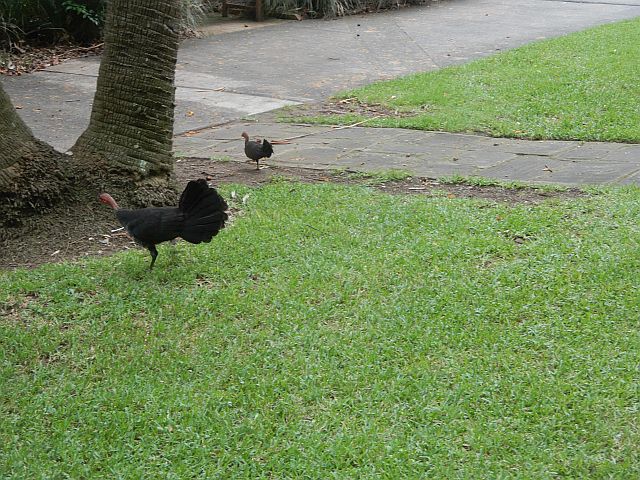
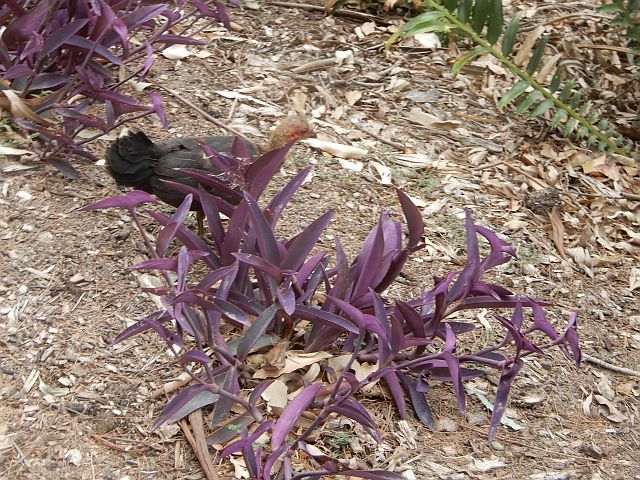 I kept coming across an adult Bush Turkey and a young Bush Turkey. I think they were as surprised by this as I was. Regardless the young Bush Turkey presented a problem when it came to photography. He could really put on the speed when he wanted to do so. I felt like naming him Speedy Gonzales. Just when you think you have him in your sights, he’s off like a shot. I did finally get him on his own but it did take some effort.
I kept coming across an adult Bush Turkey and a young Bush Turkey. I think they were as surprised by this as I was. Regardless the young Bush Turkey presented a problem when it came to photography. He could really put on the speed when he wanted to do so. I felt like naming him Speedy Gonzales. Just when you think you have him in your sights, he’s off like a shot. I did finally get him on his own but it did take some effort.

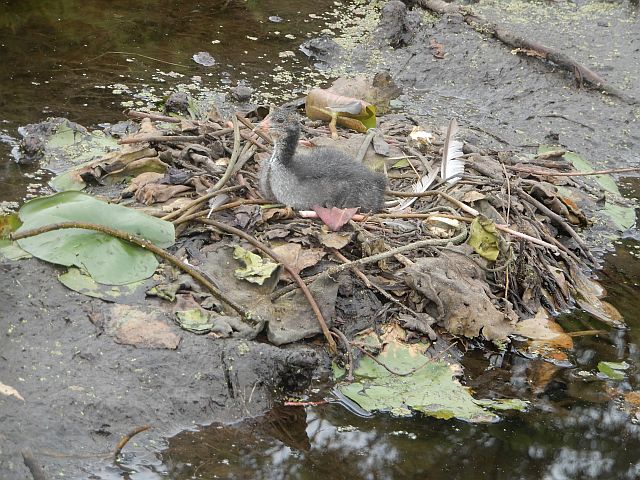 The Botanic Garden pond in February was not without nesting as well as young birds. It is always good to see new life. Here we have Eurasian Coots entertaining visitors and providing yet another reason to visit the garden.
The Botanic Garden pond in February was not without nesting as well as young birds. It is always good to see new life. Here we have Eurasian Coots entertaining visitors and providing yet another reason to visit the garden.

 Admittedly the most photographic bird that day was a Catbird who hung around the bird bath near the exit to the garden. This Catbird didn’t seem to have any intention of taking a bath while I was around. Even so, the bird didn’t fly off in a huff.
Admittedly the most photographic bird that day was a Catbird who hung around the bird bath near the exit to the garden. This Catbird didn’t seem to have any intention of taking a bath while I was around. Even so, the bird didn’t fly off in a huff.
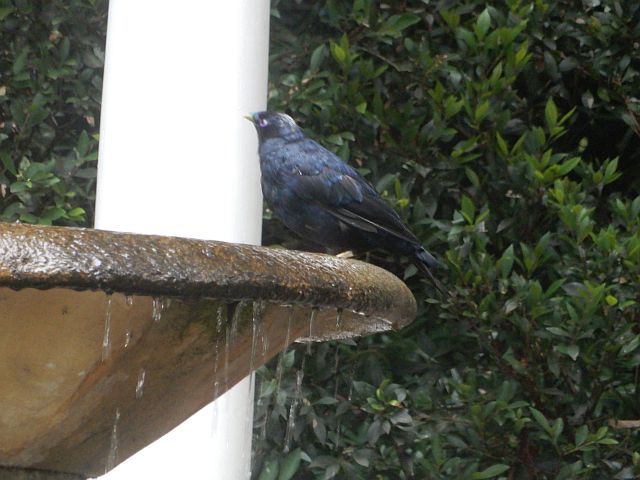 It was while the Catbird was working out whether it would take a bath or not, a sneaky male Satin Bowerbird came along and took a dip. Once this intruder had left the Catbird came out of hiding and continued to hang around the bird bath no doubt waiting for me to go. It had been a cloudy day and it was starting to rain so it was time to say adios to the garden until another day and head on home.
It was while the Catbird was working out whether it would take a bath or not, a sneaky male Satin Bowerbird came along and took a dip. Once this intruder had left the Catbird came out of hiding and continued to hang around the bird bath no doubt waiting for me to go. It had been a cloudy day and it was starting to rain so it was time to say adios to the garden until another day and head on home.

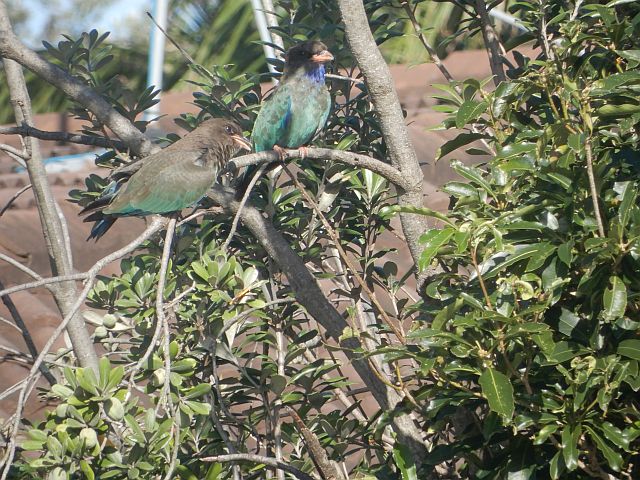 It always seems to be the way. Just when you think you won’t see anything special birding that day something always turns up. This happened Sunday on the walk to the East Corrimal shops from Corrimal Beach. I heard this great buzz of wings and there was this male Dollar Bird coming in for a landing on a tree close to this footbridge. Had he been showing off with his spread of wings? I would say so. Then I found out why. He started to sing and quite a lovely song at that. Then it became a duet because he wasn’t alone or at least not alone for long. He had a lady love with him. I tried to get them on film because I wanted their song. I got visuals fine but the wind would not allow me to pick up, with my camera, their wonderful voices. Even so, it was a real treat seeing them together.
It always seems to be the way. Just when you think you won’t see anything special birding that day something always turns up. This happened Sunday on the walk to the East Corrimal shops from Corrimal Beach. I heard this great buzz of wings and there was this male Dollar Bird coming in for a landing on a tree close to this footbridge. Had he been showing off with his spread of wings? I would say so. Then I found out why. He started to sing and quite a lovely song at that. Then it became a duet because he wasn’t alone or at least not alone for long. He had a lady love with him. I tried to get them on film because I wanted their song. I got visuals fine but the wind would not allow me to pick up, with my camera, their wonderful voices. Even so, it was a real treat seeing them together.
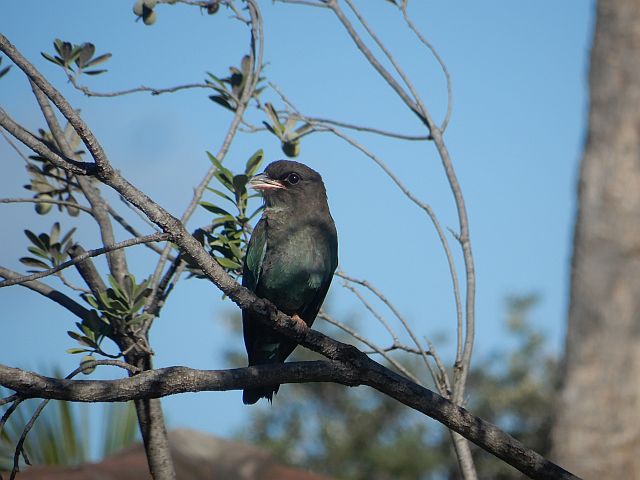
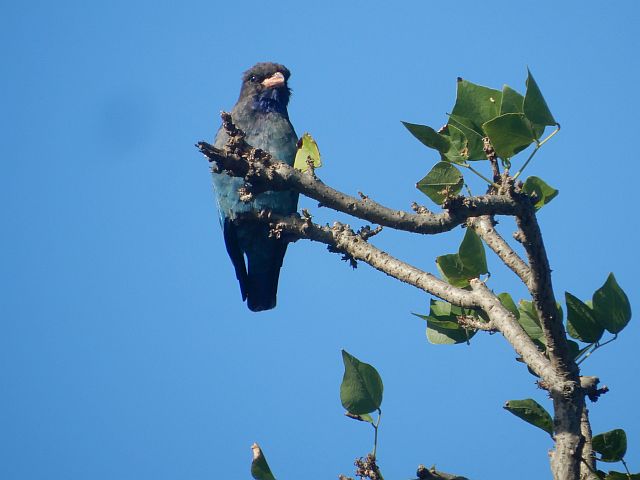 I also got photos of these Dollar Birds apart. Such vibrant colors! Only one seemed to have a purplish-blue bib. They were really a joy to behold on a day when I wasn’t expecting to see much if anything at all.
I also got photos of these Dollar Birds apart. Such vibrant colors! Only one seemed to have a purplish-blue bib. They were really a joy to behold on a day when I wasn’t expecting to see much if anything at all.
 More news on number 35 Pied Oystercatcher I found in the Shoalhaven weeks ago. Pieds as well as Sootys are endangered. Here is what was said in an email about this adventurous bird by Carol, information officer of Environment Line and yes it was good news.
More news on number 35 Pied Oystercatcher I found in the Shoalhaven weeks ago. Pieds as well as Sootys are endangered. Here is what was said in an email about this adventurous bird by Carol, information officer of Environment Line and yes it was good news.
 My comedy Talk to the Hand will be staged at the arts theatre in Cronulla. It is part of the first Crash since the corona virus hit. It is a return to normalcy or as close to it for live performance as is currently possible. The action starts at 4pm on the 28th of February. More bums on seats would be great. Slowly we are leaving the shortcomings of 2020 behind.
My comedy Talk to the Hand will be staged at the arts theatre in Cronulla. It is part of the first Crash since the corona virus hit. It is a return to normalcy or as close to it for live performance as is currently possible. The action starts at 4pm on the 28th of February. More bums on seats would be great. Slowly we are leaving the shortcomings of 2020 behind.